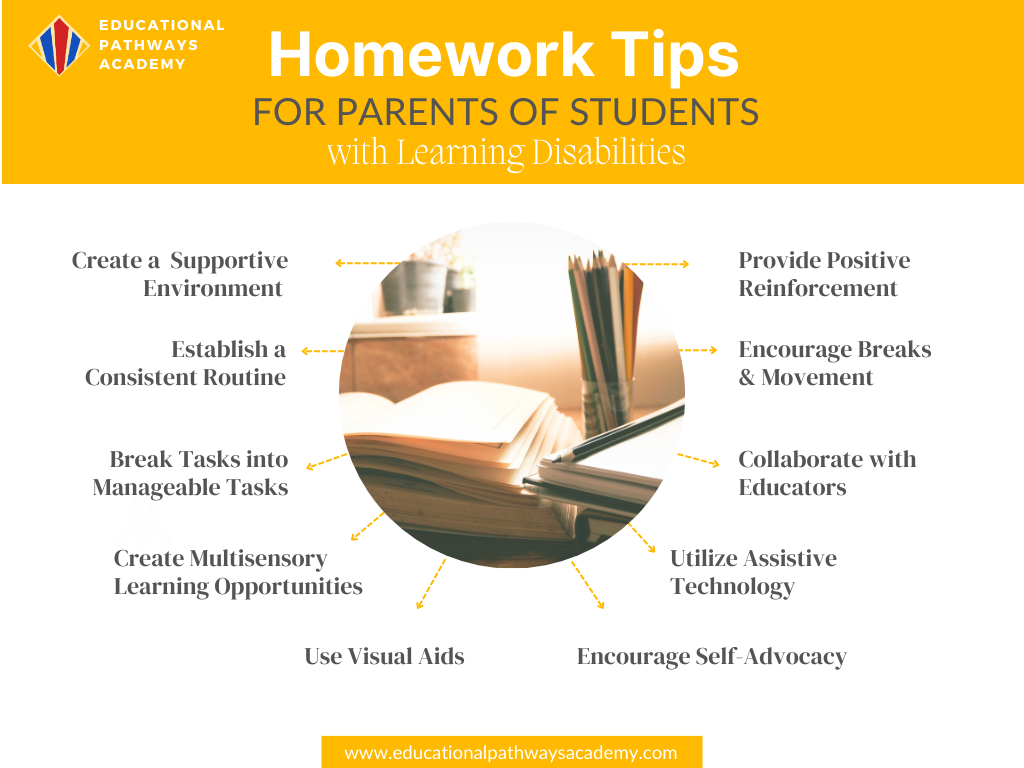Empowering Your Child's Homework Journey: A Guide for Parents of Students with Language-Based Learning Disabilities
Homework time can often be a source of stress and frustration for both parents and students alike. For parents of students with language-based learning disabilities such as dyslexia, this challenge can be particularly daunting. However, with the right strategies and a supportive approach, homework can become a meaningful opportunity for learning, growth, and connection. In this guide, presented by Educational Pathways Academy, a school for dyslexia and learning disabilities in Florida, we'll explore effective ways for parents to empower their child's homework journey, providing valuable insights into how to create a positive and productive homework routine.
Understanding Language-Based Learning Disabilities
Navigating the world of homework with a child who has language-based learning disabilities requires a unique approach rooted in understanding and empathy. Language-based learning disabilities can impact various aspects of your child's ability to process and express language, affecting their reading, writing, and even verbal communication. It's important to recognize that these challenges are not indicative of your child's intelligence or effort; rather, they are part of their individual learning profile. By acknowledging and understanding these learning differences, you can provide the tailored support your child needs to excel academically. In this journey, your role as a parent is pivotal in helping your child embrace their strengths and overcome obstacles. Together, we can create a nurturing environment that builds their confidence and fosters their potential.
A homework guide for Parents of students with langauge-based learning disabilities
Create a Supportive Environment: The homework environment plays a significant role in your child's success. Designate a quiet and organized workspace free from distractions. Ensure that all necessary materials, such as notebooks, textbooks, and any assistive technology tools, are readily available. A well-structured environment can help your child focus and engage more effectively with their tasks.
Establish A Consistent Routine: Consistency is key when it comes to homework. Set a regular homework schedule that aligns with your child's natural rhythm. Establish a predictable routine that includes breaks and time for relaxation. This structure helps your child transition smoothly from school to homework mode, reducing anxiety and promoting a sense of control.
Break Tasks into Manageable Steps: Large assignments or projects can be overwhelming for students with language-based learning disabilities. Break down tasks into smaller, manageable steps and if necessary spread tasks out over multiple days. Guide your child through each step, offering assistance and encouragement. Celebrate their progress at each milestone, reinforcing their confidence and motivation. Here are a few examples:
Assignment: Complete Math Problems 1-10. Problem 1 - 24 + 13
Step 1: Write down the first number, which is 24.
Step 2: Write down the second number, which is 13.
Step 3: Start by adding the units digits (4 + 3). Write down the result (7).
Step 4: Move to the tens digits (2 + 1) and add any carried-over digits from the previous step. Write down the result (3).
Step 5: Combine the tens and units results to get the final answer, 37.
Assignment: Read a short story and answer questions.
Preview the Story
Read the Story (Chunk by Chunk)
Discuss and Define Unknown Vocabulary
Summarize Each Chunk
Review and Reflect
Answer Questions
Final Reflection
Use Visual Aids: Visual aids, such as charts, diagrams, and color-coded instructions, can be incredibly helpful for students who struggle with reading or processing information. Use visuals to outline the steps of an assignment or to illustrate complex concepts.
Create Multisensory Learning Opportunities: Engaging multiple senses can enhance learning and retention. Encourage your child to incorporate different sensory modalities into their homework. For example, reading aloud, using visual aids, drawing pictures, or incorporating hands-on activities can reinforce understanding and make learning more enjoyable.
Utilize Assistive Technology: Modern technology offers a wide range of tools that can significantly support students with language-based learning disabilities. Explore assistive technology tools such as text-to-speech, speech-to-text, spell checkers, and word prediction software. These tools can empower your child to independently tackle reading and writing challenges by making them more accessible.
Encourage Breaks and Movement: Balancing focused work with breaks is essential. Allow short breaks during homework sessions to prevent frustration and mental fatigue. Movement breaks, such as stretching or quick physical activities or simply stepping away from the workspace for a few minutes can help reenergize your child and improve focus.
Encourage Self-Advocacy: Empower your child to communicate their needs and challenges. Encourage them to ask questions, seek help when necessary, and communicate with their teachers about their learning requirements. Developing self-advocacy skills boosts confidence and equips your child with essential tools for navigating both their academic and personal lives.
Provide Positive Reinforcement: Acknowledge and celebrate your child's efforts, progress, and perseverance. Positive reinforcement fosters a growth mindset and helps your child develop a healthy attitude towards challenges. Celebrate achievements, no matter how small, to build their self-esteem and motivation.
Collaborate with Educators: Maintain open communication with your child's teachers. Regularly discuss your child's homework experience and any challenges they may be facing. Working together ensures that your child's needs are understood and accommodated both at school and during homework time.

